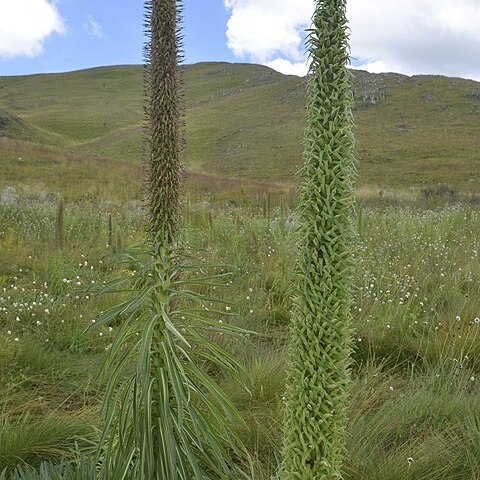Leaves sessile, linear to narrowly lanceolate, 15–40 x 2–4(6) cm., acute to rounded and mucronate at the apex, rounded to auriculate at the base, glabrous or puberulous and often shining above, ±: puberulous beneath; margin entire or at least in young leaves denticulate by the projecting hydathodes; venation protruding beneath with numerous costae arising at an angle of c. 45° to the midrib distal to the phyllodic leaf–base with ± parallel venation.
Inflorescence up to 1 m. long, dense, cylindrical, unbranched; pedicels 5–6(8) mm. long, pubescent, with two minute bracteoles; bracts narrowly oblong to linear, (30)40–60 x 3· 8 mm., acute or rounded and mucronate at the apex, ± pubescent.
Corolla 30–35 mm. long, greenish, lilac or pale blue, split to the base on the back, pubescent outside; two lateral petals linear, ± united with middle petals below; three middle petals united to form a lip with linear lobes.
Seeds elliptic–oblong in outline, compressed, winged on one side, 1·2–1·5 mm. long, finely striate, pale brown.
Filaments linear, connate for most of their length, ± papillose towards the base, free from corolla.
Anther–tube 9–11 mm. long, the two lower anthers apically barbate, otherwise glabrous or almost so.
Calyx–lobes narrowly triangular, flat, 8–15(20) mm. long, entire, pubescent on both sides.
Capsule subspherical, ± 7 mm. long, 10–nerved, pubescent, with two valves, 2–3 mm. long.
Stem ± erect, to 8 cm. thick at base, terete, hollow above, glabrous to pubescent.
Hypanthium obovoid, truncate at the base, 10–nerved, pubescent.
Plant 1–3.5 m. tall in flower, suckering from the base.
Ovary subinferior.

